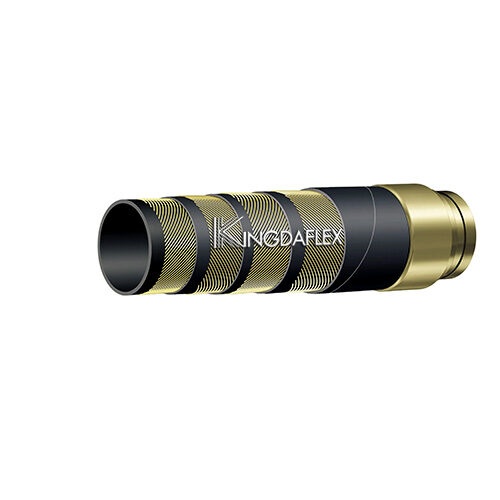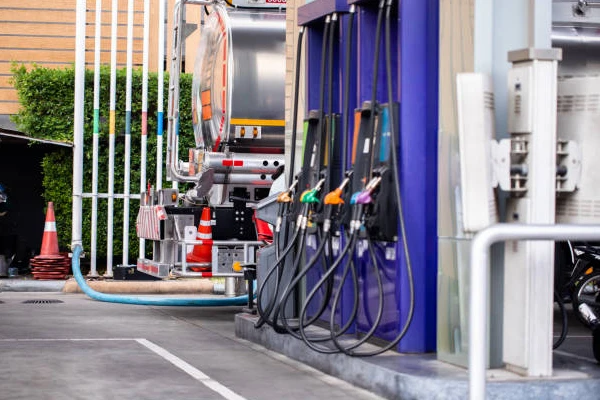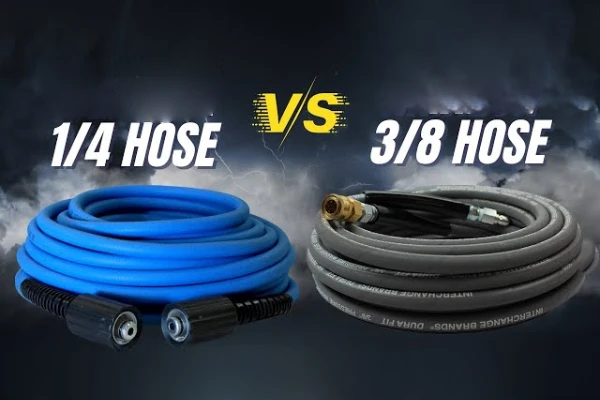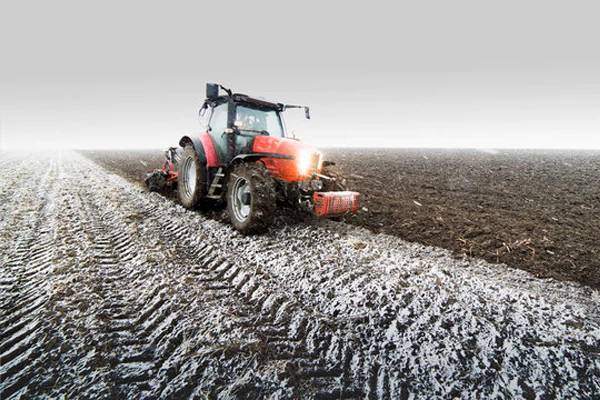Maintaining a clean concrete pump hose is essential for ensuring efficient and safe concrete pumping operations. Residual concrete buildup can lead to blockages, reduced flow rates, and premature hose wear, impacting project timelines and increasing maintenance costs. Proper cleaning not only prolongs the hose’s lifespan but also prevents costly repairs and system failures.
This blog will guide you through the necessary steps and best practices for cleaning concrete pump hoses, ensuring your equipment remains in optimal condition. We’ll cover various cleaning methods, safety precautions, and maintenance tips to help you keep your concrete pump hoses clean and operational.
What is Concrete Pump Hose
A concrete pump hose is a specialized, heavy-duty hose designed to transport concrete from a concrete pump to the desired placement location. These hoses are engineered to withstand the abrasive nature of concrete and the high pressures exerted during pumping. They are crucial for efficiently and accurately delivering concrete to various construction sites, including high-rise buildings, bridges, and other large-scale projects.
These hoses are typically made from durable materials like reinforced rubber or synthetic composites, ensuring they can handle the demanding conditions of concrete pumping. They come in various diameters and lengths to accommodate different pumping capacities and placement requirements. The design of concrete pump hoses prioritizes flexibility and durability, allowing for easy maneuverability and long-lasting performance in challenging construction environments.
How to Clean Concrete Pump Hose?

Maintaining a clean concrete pump hose is essential for ensuring efficient and safe concrete pumping operations. Regular cleaning prevents blockages, extends the hose’s lifespan, and minimizes downtime. We will guide you through the effective steps to clean a concrete pump hose.
Step 1: Initial Water Flush
Begin the cleaning process by performing an initial water flush. Connect a water source to the end of the concrete pump hose and flush clean water through the hose at a moderate pressure. This initial flush helps dislodge loose concrete debris and prevent larger blockages from forming. Continue flushing until the water exiting the hose is relatively clear, indicating that most of the loose concrete has been removed.
Ensure that the water pressure is sufficient to dislodge debris but not so high that it damages the hose. Pay attention to any areas where blockages may have formed and flush those areas thoroughly. This initial step is crucial for preparing the hose for more intensive cleaning methods and preventing hardened concrete buildup.
Step 2: Mechanical Cleaning (If Necessary)
If the initial water flush doesn’t remove stubborn, semi-hardened concrete, consider mechanical cleaning. Insert a cleaning ball or sponge specifically designed for concrete pump hoses into the hose and flush it through with water pressure. This mechanical action helps scrape and dislodge remaining concrete deposits.
Adjust the size and type of cleaning ball or sponge based on the hose’s diameter and the severity of the concrete buildup. Multiple passes may be necessary to ensure thorough cleaning. Mechanical cleaning is effective for removing tougher residues that water alone cannot dislodge.
Step 3: Chemical Cleaning (If Necessary)
If mechanical cleaning or the initial water flush does not remove all hardened concrete, proceed with chemical cleaning. Use a specialized concrete dissolving chemical, following the manufacturer’s instructions for dilution and application. Pour the chemical solution into the hose and allow it to sit for the recommended time to break down the hardened concrete. This step is particularly important for hoses that have been used for extended periods or with concrete mixtures that dry quickly.
After the chemical solution has had time to work, flush the hose thoroughly with clean water to remove any remaining chemical residue and loosened concrete. Ensure all chemical traces are eliminated to prevent damage to the hose or contamination of subsequent concrete mixtures. Proper chemical cleaning is essential for maintaining the hose’s internal integrity and preventing long-term damage.
Step 4: Final Water Flush and Inspection
Perform a final water flush to ensure all remaining debris and chemical residues are completely removed. This step involves flushing the hose with clean water at a moderate pressure until the water exiting the hose is completely clear. Pay close attention to any areas where debris may have accumulated and ensure they are thoroughly cleaned.
After the final flush, inspect the hose for any signs of damage, such as cracks, abrasions, or leaks. Check the couplings and connections to ensure they are secure and in good condition. Proper inspection after cleaning is crucial for identifying potential issues and preventing costly repairs or downtime.
Step 5: Drying and Storage
After the final inspection, allow the hose to dry completely before storing it. Hang the hose vertically or lay it out in a well-ventilated area to ensure all moisture evaporates. Proper drying prevents mold growth and deterioration of the hose material.
Store the clean, dry hose in a cool, dry place away from direct sunlight and extreme temperatures. Avoid kinking or folding the hose during storage, as this can cause damage. Proper drying and storage extend the lifespan of the concrete pump hose and ensure it is ready for future use.
When to Clean the Concrete Pump Hose?
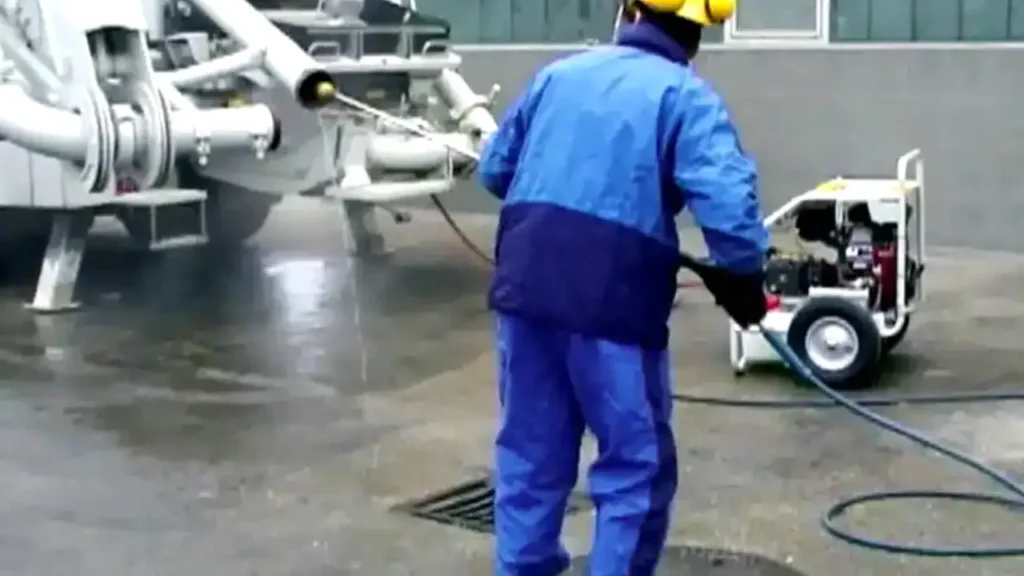
Determining the optimal time to clean a concrete pump hose is crucial for maintaining its efficiency and longevity. Consistent cleaning practices prevent concrete buildup, which can lead to blockages, reduced flow, and premature hose wear. The frequency of cleaning depends on various factors, including the type of concrete being pumped, the duration of pumping operations, and environmental conditions.
Here are key times when cleaning should be prioritized:
Immediately After Each Pumping Session:
Cleaning the concrete pump hose immediately after each pumping session is essential to prevent concrete from hardening inside the hose. Fresh concrete is easier to remove than hardened concrete, which can create stubborn blockages and necessitate more intensive cleaning methods. Prompt cleaning minimizes the risk of damage to the hose and ensures it’s ready for the next use, reducing downtime and maintaining operational efficiency.
Before Extended Periods of Inactivity:
Before any extended period of inactivity, such as overnight or over weekends, it is vital to thoroughly clean the concrete pump hose. Concrete left inside the hose for prolonged periods can harden and become extremely difficult to remove. This buildup can lead to significant blockages and damage, requiring extensive cleaning efforts or even hose replacement. Cleaning before inactivity preserves the hose’s condition and ensures it remains in optimal working order.
Tips to Keep Concrete Pump Hose Clean
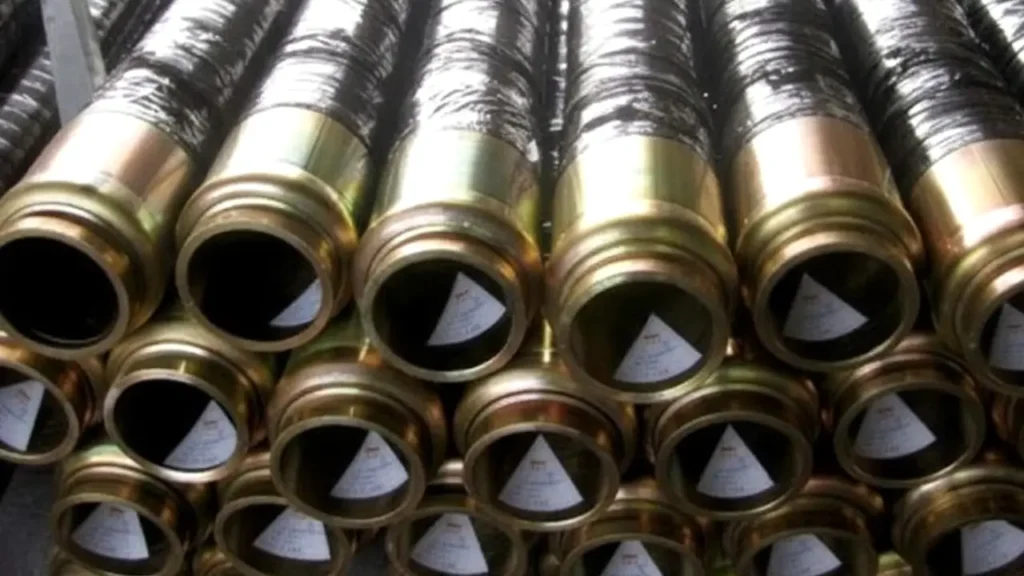
Keeping your concrete pump hoses clean is paramount for safety, equipment longevity, and efficient operation. Concrete residue left to harden inside the hose is the number one cause of internal wear, blockages, and premature failure, leading to costly repairs and project downtime. A consistent cleaning routine is an essential operational practice.
Flush Immediately After Use
The most crucial step is to clean the hose as soon as the concrete pour is finished, before the material can begin to set. Flush the lines with water immediately, or pump a lubricating slurry (like water and cement) through the hose. This proactive action removes the majority of the wet, pliable concrete, preventing a hard, abrasive buildup.
Use a Sponge Ball Cleaning System
A sponge or rubber cleaning ball, slightly larger than the hose’s inner diameter, is pushed through the line using water or air pressure. This process physically scrapes the internal walls of the hose, effectively removing concrete residue and ensuring a clear, smooth interior surface, which greatly minimizes future blockages and wear.
Thoroughly Clean Couplings and Ends
Pay special attention to the couplings, clamps, and hose ends, as concrete tends to accumulate and harden in these areas, compromising the seal for the next use. Disassemble the connections and use a stiff brush and water to remove all mortar residue to ensure a tight, leak-free connection for every subsequent pumping job.
Avoid Using Compressed Air on Short Hoses
While compressed air can be used for cleaning certain pump systems, it should never be used on short rubber hoses because they lack the mass to control the concrete’s movement. The high-pressure expulsion of concrete and air can cause the hose to whip violently, posing a severe and dangerous safety hazard to all personnel in the area.
Conclusion
Maintaining a clean concrete pump hose is vital for optimal performance and longevity. Regular cleaning prevents blockages, reduces wear, and ensures consistent concrete flow. Proper cleaning procedures, including water flushing and chemical cleaning, are essential for removing hardened concrete and debris.
Following these cleaning steps minimizes downtime and extends the hose’s lifespan, contributing to efficient and safe concrete pumping operations. Consistent maintenance guarantees that your hydraulic systems perform reliably, reducing the risk of costly repairs and delays.
For high-quality, durable concrete pump hoses, choose Kingdaflex. We offer a comprehensive range of wholesale solutions tailored to your specific needs. Contact us today for a quote and ensure your concrete pumping operations run smoothly and efficiently.

